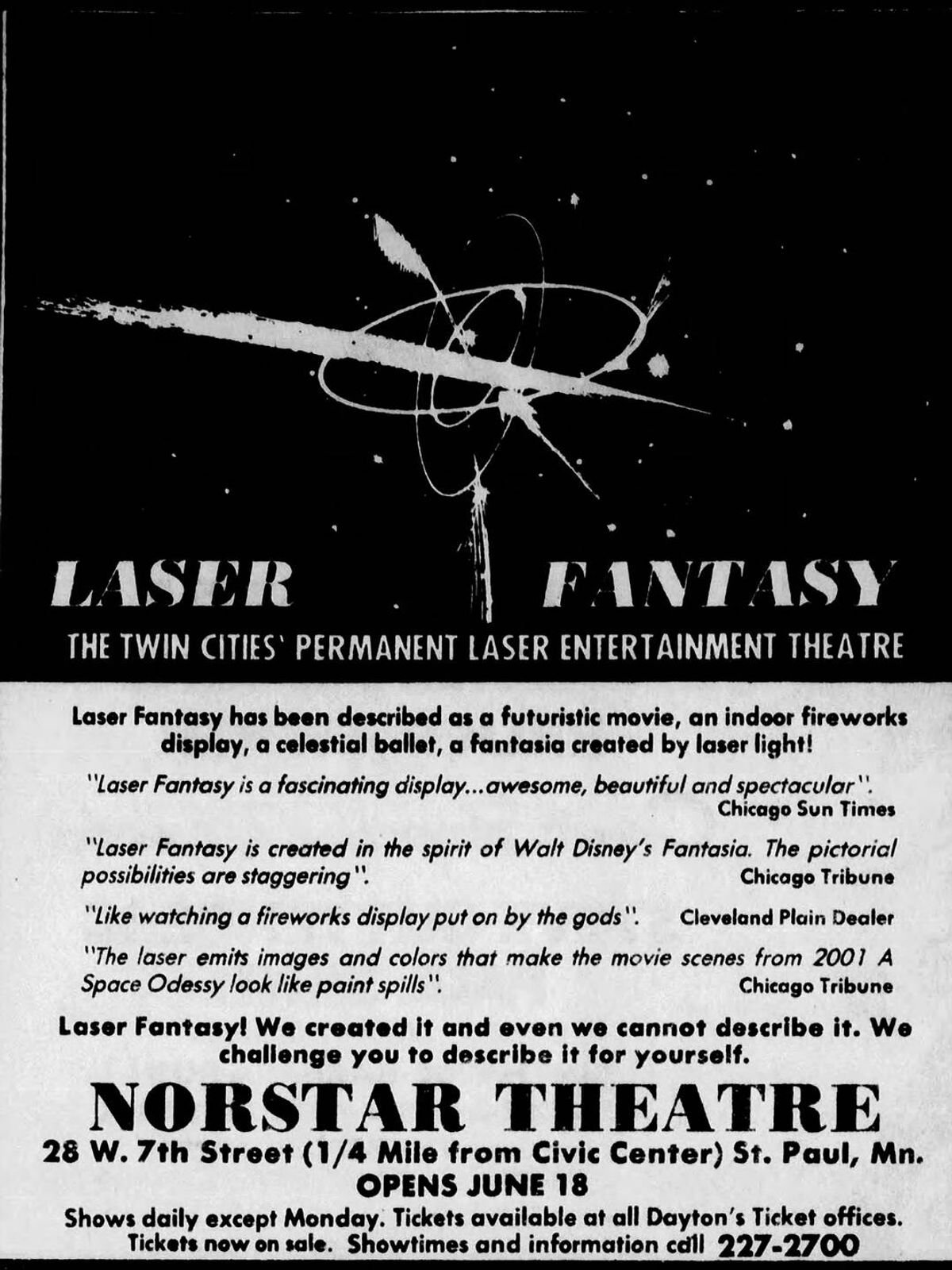Warning: You are about to be exposed to our shameless nostalgia department. Dredging the old KTCA archives reveals just how fragile our culture is: Community outposts in the form of cafes and ballrooms shutter, making way for the next round of big-box stores. Book and music shops lose their mesmerizing pull as more people get their fix online. So allow us to indulge ourselves - and perhaps some of your memories - as we take a look back at some venues, stores and concepts that have disappeared from our collective Midwestern landscape.
1. Coffeehouse Extempore
Before we dive in, a little backstory on this coffee shop venue:
The Original Extempore was opened by a group of clergy and laymen at 2200 Riverside Av. in 1965. Later the hippies moved in and, in the fall of 1967, the café closed after acquiring a reputation as a center for drug traffic on the West Bank. - Dave Jordan, The Minneapolis Tribune on May 18, 1969.
When Dave Jordan was writing about this legendary coffeehouse in 1969, the Extempore had reopened and was still being run by the clergy, The West Bank Campus Ministry (WBCM), and personally managed by Lutheran Reverend Gordon “Gordie” Dahl.

The Extemp, as it was known, offered a way in to communicate with the hippies, as Reverend Dahl says in the article: “We have built up credibility with the hippies, enough so they feel they can say or do or be anything they want to here.” The Extempore was the headquarters for the WBCM's mission to help runaways and to grapple with the homeless youth issue of the day. To that end, they set up an emergency youth hotline and made strides into activism.
Cut to when this video was filmed in 1982. The Extemp is now a place with a legacy of true folk culture on the West Bank. It’s great to see this place memorialized on video. I’d always heard rumors that Bob Dylan had busked outside of its doors. An 80s swan song to 60s pollyanna-ism, you can practically hear the death rattle of left-wing idealism. Filmed at a time when the Twin Cities folk scene was past its heyday, the video captures folkie counterculture violently jackknifing with yuppie real estate. But we do get to see a young Peter Ostroushko, and we also get a glimpse of a time and place long gone from our city. Originally broadcast on Nighttimes Magazine on February 18, 1982.
2. Met Stadium
Oh, you can still tailgate at a Minnesota sportsball. In fact, here's a link to the official rules for tailgating, US Bank Stadium assures us that it is part of the guest experience. Think 21st century corporate-sanctioned tailgating even vaguely resembles the 1981 experience? [Maniacal laugh]. Originally broadcast on Nighttimes Magazine on October 20, 1981.
3. Laser Fantasy
Do you remember the late-night laser shows of the 70s and 80s? With weekend events at the Downtown Minneapolis library's planetarium, they were a pretty short-lived trend. Personally, I never experienced a show, though I always imagined a theater full of stoned long-hairs experiencing futurism-aided hallucinations. This video segment is about Saint Paul's laser “spectacular,” which played out for a couple of years at the Norstar Theater on 7 Street, between St. Peter and Wabasha. Laser Fantasy was engineered by the perfectly named, 25-year-old Floyd Rollefstad.
Floyd cobbled together a 4-color krypton laser projector, his own special-purpose circuits, an optical synthesizer and an instrument panel, a “Keyboard” with more than 100 controls. The whole rig cost Rollefstad about $50,000 in 1981. Unlike other pre-programmed laser shows, this one had that special Rollefstad feel to it, with Floyd playing the lasers as his own spontaneous creation. Even though Laser Fantasy only lasted in Saint Paul for about 2 years, Rollefstad stayed in the biz and is currently the head of Laser Fantasy International, which is responsible for Canada’s first permanent outdoor laser display at the new Millennium Park in Calgary. Originally broadcast on Nighttimes Magazine on February 15, 1982.

4. Christmas Shopping in Downtown Minneapolis
Before the internets and long before Amazon, all Minnesotans could find a Christmas present, for every member of the family, in an afternoon's trip to downtown Minneapolis. The window displays of Dayton’s didn’t quite match the sophistication of those in NYC – but we loved ‘em, and went every year to look at 'em. There was Dayton’s and Donaldson's and Powers - and don't forget Sun's (for the rock 'n' roll people on the list). Originally broadcast on Nighttimes Magazine on December 15, 1981.
5. Polka Night at the Majestic Ballroom
I watched this video and figured that there must still be a thriving polka scene in town. So I reached out to the Midwest Polka Association and chatted with the Vice President of the MPA, the delightful Dorothy Jones.
"The heyday of polka music was from the 1940s through the 1980s. Even though rock 'n roll music became popular in the 1960s, both types of music thrived in the ballrooms," she says.
"In the last two decades, the younger generation seem more interested in technology and haven't followed their parents and grandparents into dancing. And dancing is no longer taught in schools as part of Physical Education classes."
Featured in the video, the Majestic Ballroom in Cottage Grove closed in 1999. It was used by an equipment business for a while, but now sits empty, paint chipping off the brown trim. Without a use for other businesses or organizations, many of the old ballrooms have been razed.

But polka music and dancing live on! The MPA holds one polka dance each month with a live band. In more recent history, dances take place at the Maplewood Moose Lodge - but that will change when the facility closes in June of 2019. The club also has dances at the Withrow Ballroom near Hugo-Stillwater, along with a wonderful dancing venue in Columbia Heights called Murzyn Hall. Originally broadcast on Nighttimes Magazine on January 14, 1982.
6. Raess Market
Marie Raess ran this market from the days of the Great Depression through the 1980s. It was your average, everyday, super-expensive, bougie neighborhood cheese shop at 1783 St. Clair in Saint Paul, but it looks like it was a whole lot more. It looks awesome, and I wish I could go shop there right now. Originally broadcast on Nighttimes Magazine on December 17, 1982.
7. Savran's
A paperback book store opened by Bill Savran in the early 1960s, Savran’s became a West Bank institution, carrying more than 20,000 books, primarily on literature, art, history and philosophy. As you can see in this video, the store was a hangout for the lefty intellectuals of the Twin Towns. Already a staple in Minneapolis, Bill and his wife Sue Ann opened a second location at Western and Selby in Saint Paul, though the shop didn't quite live up to their expectations. When the West Bank store’s rent doubled, the couple behind Savran’s had to declare bankruptcy, and they closed both stores in 1986.
Bonus Trivia: After the book stores closed, Bill Savran returned to his original career as “A Real Mensch," a Yiddish branded handyman. Originally broadcast on Nighttimes Magazine on February 9, 1982.

8. Munsingwear
In my journeys into the KTCA archives, this was the most sobering video I came across. It feels like a raw story à la Bruce Springsteen, but set right here in the Mini-Apple instead of the wind-whipped Nebraska plains. Munsingwear was founded in 1886, in Minnesota, by George D. Munsing, an East Coaster. The company's claim to fame rested on a process developed to plate silk on wool, thereby making the official uniform of Minnesota - long underwear - a lot less scratchy.
It's a fact of urban and small-town life, alike: Business and industries change, resulting in the heartbreak of people losing jobs and livelihoods. The song in the video is by Larry Long, and it was written especially for this segment. I love the scene at Lee’s as the workers air their gripes. It just feels authentic, taking you right back to that moment in time.
The factory that closes in the video was eventually rehabbed and reopened in 1985 as International Market Square. Originally broadcast on Nighttimes Magazine on December 3, 1981.
9. Coliseum Ballroom
The Coliseum ballroom near Minnehaha Avenue and E. Lake Street is from another age. It is from a time when two bands played in different rooms, one for the Swedes and one for everyone else. A time when you bought the “hard stuff” at the Schooner Tavern down the street. A time – 60 years ago – when everyone danced. - Christy Hudgins, The Minneapolis Star, June 19, 1979
The history of the ballrooms in the Twin Cities is fascinating, and if you want to learn about them along with other music venues, I highly recommend visiting Jeanne Andersen’s website Twin Cities Music Highlights: "The 70,000-square-foot, five-story Art Deco building was built in 1917 as Freeman’s Department Store. It had a huge ballroom with high ceilings on the second floor; ads can be found for dances back to at least 1922. In 1967, it had Old Time Dancing. In 1968 it was age 28+ 'Smooth Dancing.' The large building held many businesses, such as Podany’s Office Furniture, doctors’ and dentists’ offices, rehearsal space for music groups.”
Originally broadcast on Nighttimes Magazine on January 5, 1984.
10. Intellectualism on Television
I’m still a little in shock after finding this 1980 video from our bizarrely named TV show Electronicle. They decided to spend more than 6 minutes of primetime TV ruminating on the philosophy of Jean Paul Sartre!~! {slide whistle}, [spit take]. Could this trend make a welcome return to our modern airwaves? Please? Originally broadcast on Electronicle on May 13, 1980.
Thank you to: Dorothy Jones, Jeanne Andersen, The Midwest Polka Association, The Minnesota Historical Society, Twin Cities Music Highlights, The Minneapolis Star Tribune.

This story is made possible by the Arts and Cultural Heritage Fund and the citizens of Minnesota.
